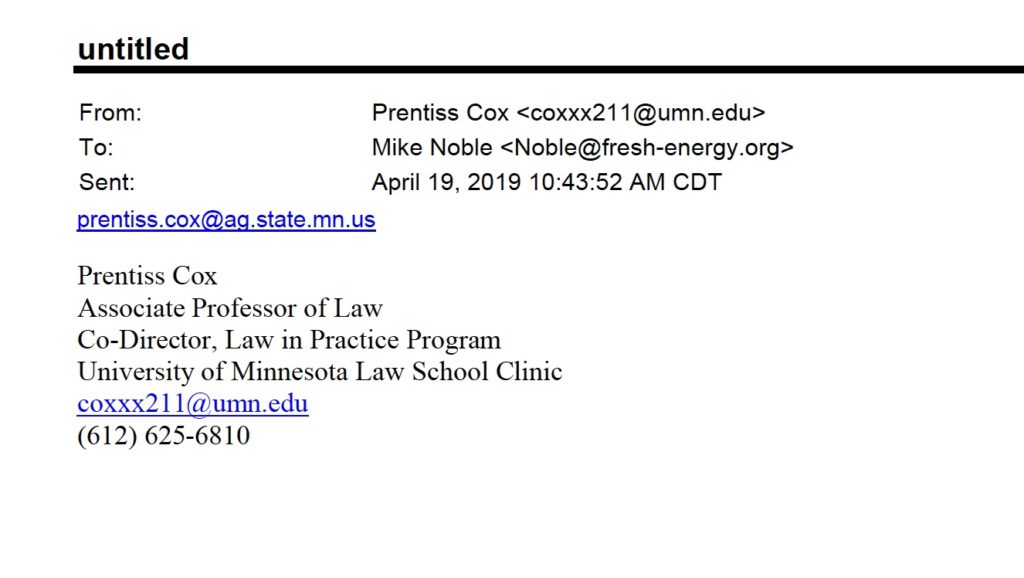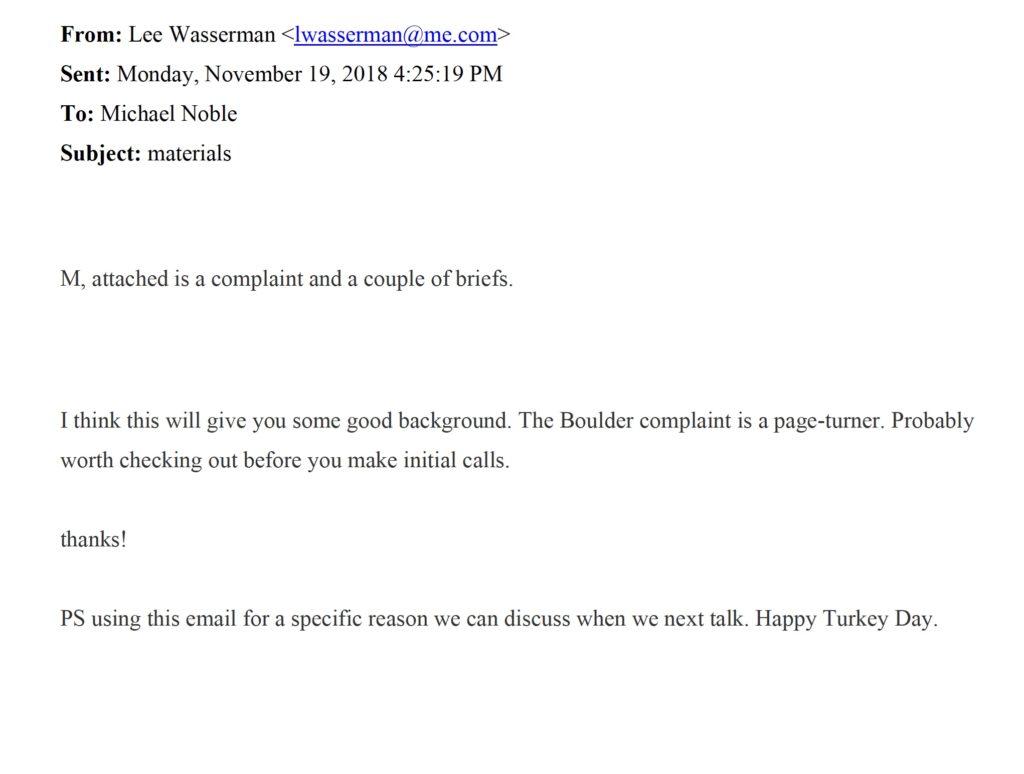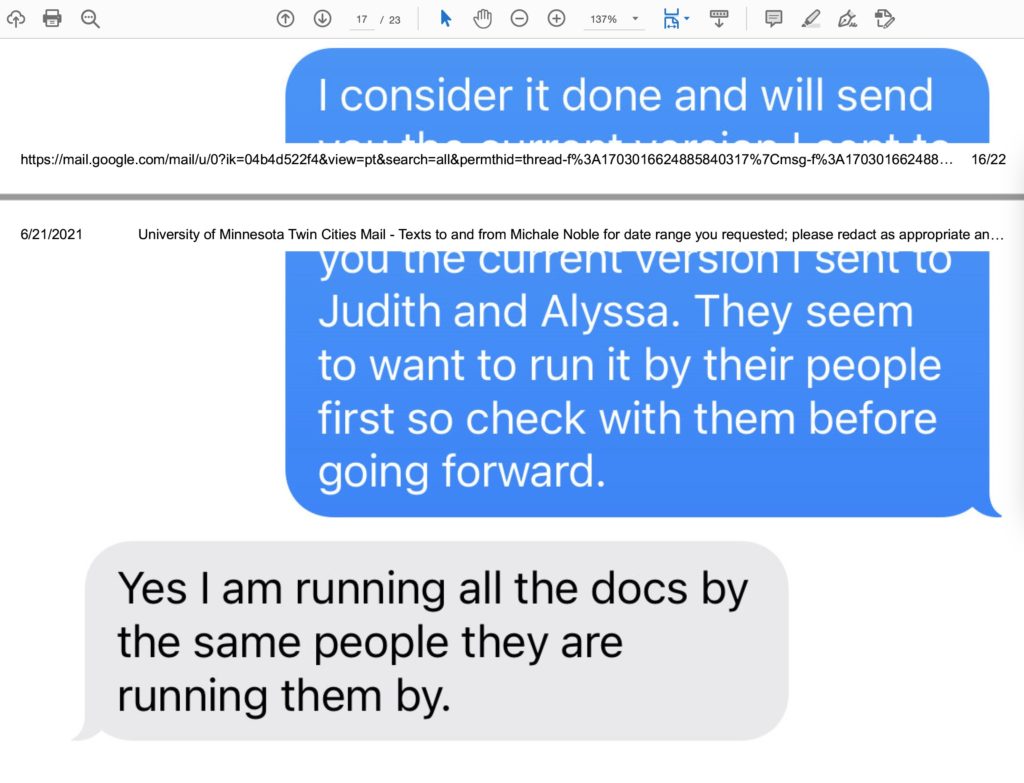Now that the United States Supreme Court has ruled on the Mayor and City of Baltimore “climate nuisance” lawsuit, sending that and (as a result) numerous other tort-bar driven initiatives back to federal district and appellate courts for reconsideration, several mileposts for this litigation campaign are fast approaching.
As further judicial scrutiny of the climate litigation scheme awaits, CLW gives thanks to Energy Policy Advocates (EPA), for clueing us in even more on how private interests have enlisted not just municipalities but prosecutors and public universities to target political opponents in what is reasonably viewed as a shakedown (both for “revenue streams”, and to get the targets to agree to and even lobby for the litigation campaigners’ policy agenda).
And we already knew a lot, most recently updated here, in a report by GAO for EPA detailing very disturbing findings from Minnesota. In short, emails, text messages and memos secretly arranged by donors and activists put to rest the assertion made by a federal judge in the Spring of 2018 that there is a “missing link between the activists and the AGs [state attorneys general].”
But wait, there’s more.
Now, once again courtesy of public institutions in the Land of 10,000 Lakes, comes a small cache of text messages shedding further light on MN AG Keith Ellison’s lawsuit against energy companies — and how a network of donors and activists convinced him to claim the state has suffered billions of dollars in man-made climate damages, which must be paid for, well, distribution by the state’s politicians.
These text messages ice the cake of the recent GAO report for EPA, which laid out the back story behind the suit filed for Ellison by two lawyers provided by climate-activist and political donor Michael Bloomberg, specifically how Ellison was first lobbied to do so by a local environmental pressure group called Fresh Energy.
Emails from the group’s Director indicate it received money from the Rockefeller Family Fund to recruit the AG to file this suit, and to get local law faculty to provide the legal memo setting forth “what is needed.”
“What [was] needed,” apparently to make such an effort take flight, was provided to Fresh Energy and a Minnesota law professor Fresh Energy recruited, Alexandra Klass, by parties whom Fresh Energy’s Director Michael Noble called “the lawyers advising the Rockefeller family fund [sic].” This all flowed from RFF Director Lee Wasserman emailing Noble to provide him with other sample climate lawsuits of the kind RFF wanted to see filed, suggesting he read them before “making initial calls.” Noble then sent these samples to ideological fellow-traveler on U of M Law faculty, Klass.
Another, Prof. Prentiss Cox, passed along to Noble that he also had an AG email account that, the context/limited content of U of M’s production suggests, Noble should use to correspond with Cox, going forward. Hmmm.

Next, that memo setting forth the theories upon which Ellison ultimately filed suit was placed on University of Minnesota letterhead and branded as University scholarship. This despite its origins as a project undertaken on behalf of and quietly funded in part by New York-based private advocacy interests — with no disclosure of that arrangement, which would have doomed this use of official stationery in a way that is facially in violation of University policy, as the GAO report for EPA details.
Not only were the memo’s origins and co-authors omitted; records now reveal that the effort to obscure was not a series of oversights but an affirmative effort from the get-go. From Noble:

Of course, as the report pointed out, emails had already showed the parties’ shared fear of tying Fresh Energy’s financing to the “U of M” memo. Plus, well, the games to hide the players preceded that vaguely worded contract, for some specific reason that Noble presumably discussed with RFF when they next talked:

These texts then drop a couple bombs:
1) Fresh Energy not only launched this campaign when RFF’s Wasserman asked it to and, apparently per Noble, paid it to. Also, however, before sending that “University of Minnesota” legal memo to Ellison, Noble first ran it past Wasserman and Rick Reed, an RFF consultant on this who has turned up elsewhere with the very same “Center for Climate Integrity” raising money for this campaign (with another public-university law prof).

That is, the donor got sign-off on the supposed University scholarship in the form of a legal memo advising law enforcement to go after political opponents.
2) Klass’s response, and Noble’s reply, indicate that the same routine was followed by Center for Climate Integrity, which ghost co-wrote the “U of M Law” memo, despite that Noble and Klass discussed them as being “the lawyers advising the Rockefeller family fund [sic]” (Judith Enck and Alyssa Johl of CCI).

So, RFF, through not one but two Minnesota channels, was given review of and approval rights for a “University of Minnesota” legal memo to AG Keith Ellison prompting Ellison to file suit against private parties targeted by RFF, seeking apparently tens of billions of dollars.
All of which should be of interest to courts dealing with the litigation in the 4th and 8th federal Circuits and several district courts — lawsuits which, documents published previously on CLW show, “the lawyers advising the Rockefeller family fund” [CCI] were also instrumental.
Energy Policy Advocates recently updated the 8th Circuit Court of Appeals with an amicus brief addressing the state of knowledge about these cases and the Minnesota case in particular, prior to these recent text messages.
Should this affect how a judge will review these cases? Yes, it should.
First, when a party comes into court seeking billions of dollars in damages, a reasonable fact finder might inquire as to when that party became aware of its loss and the loss’s magnitude. The apparent sole sourcing (RFF) of these suits—and that the AGs’ apparent discovery of these spectacular figures in damages they believe their state suffered came only after third parties outside the state started lobbying the AG, and wrote the cause of action up for him—is surely suspicious.
Also of course, the point EPA has been making in amicus briefs including to SCOTUS is that this importation and arrangement for ‘local color’/cutouts affirms, for jurisdictional purposes being considered by the federal courts and in the recent City of Baltimore opinion, is that this suit and its copycats are part of a national campaign, seeking to impose a national agenda, orchestrated by the same party that first orchestrated other theories at obtaining the same outcomes.
The specific excuse for the suits has changed along the way but—while it is true that the scandalous behavior coming out is an issue left for the local judicial systems—it is increasingly obvious these predatory suits are matters for the federal judiciary to resolve.
